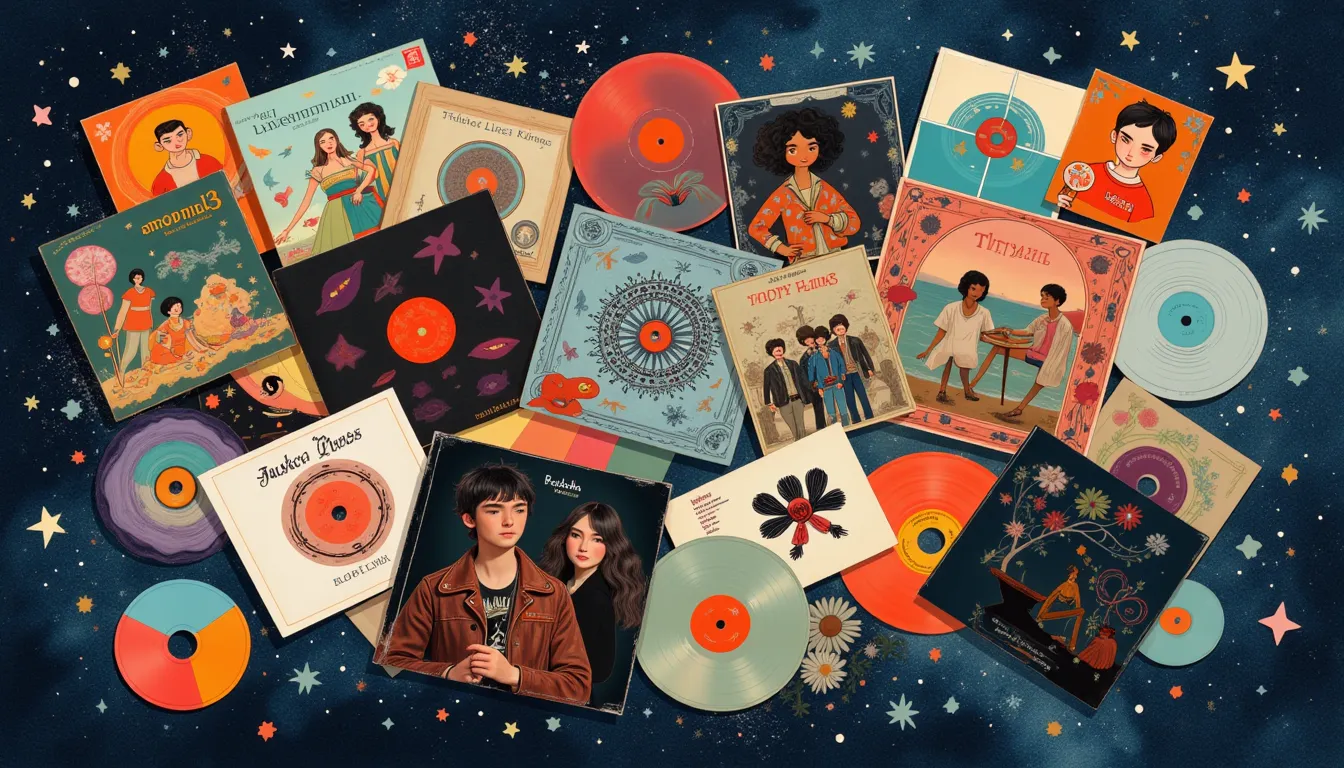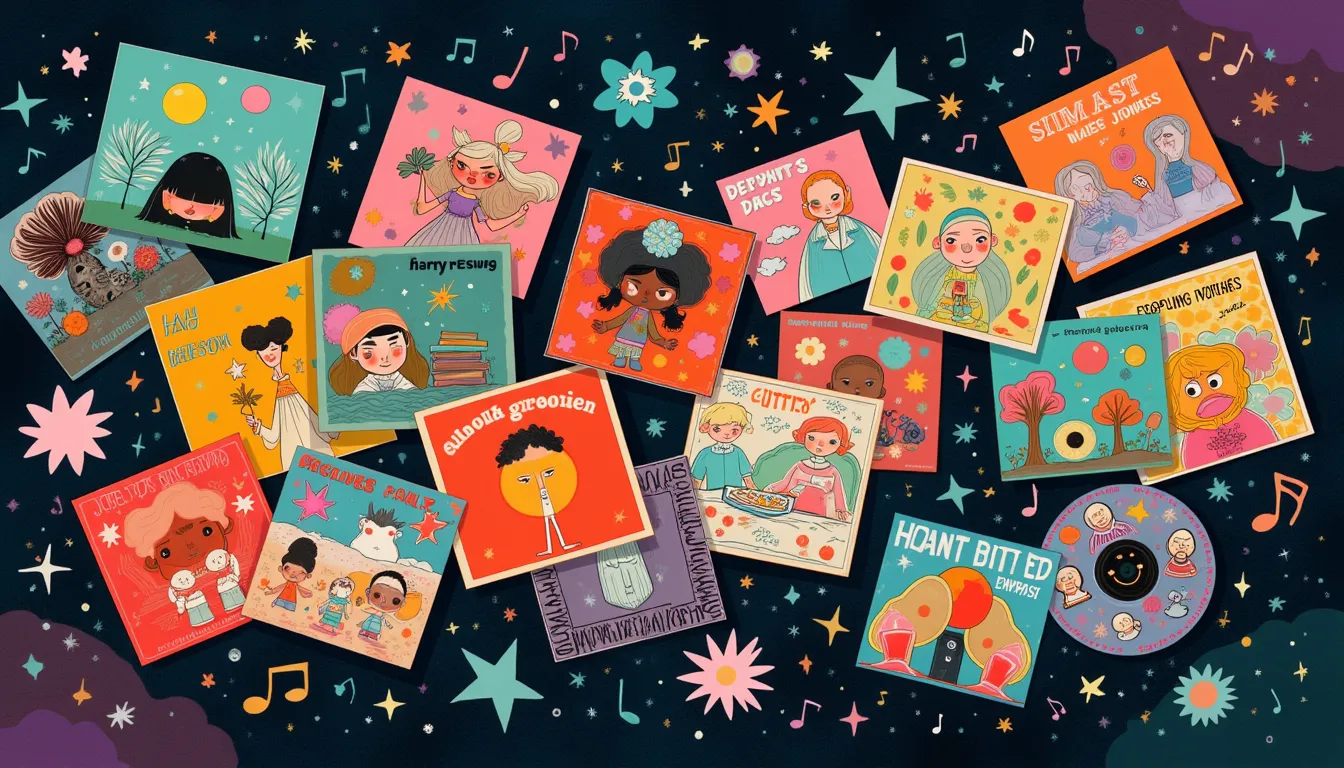The Magic Behind Iconic Album Covers
Imagine you're flipping through a stack of vinyl records. Each album cover tells its own story before you even listen to the music inside. It's like a book cover that whispers promises of the tales within. Some album covers are so iconic they transcend time and remain etched in our memories. They have the power to evoke emotions, spark curiosity, and become inseparable from the music they represent. But what makes an album cover truly iconic? How do these visual masterpieces create lasting impressions?
In this post, we'll journey through the world of album covers and explore how these artistic creations capture the essence of music. We'll uncover the stories behind some of the most iconic designs in music history. Whether you're a music enthusiast or just curious about the magic of album cover art, this exploration is for you. So, let's dive in and discover the magic behind these eye-catching artworks.
The Power of Visual Storytelling
First Impressions Matter
When you first encounter an album, the cover is the initial handshake. It's the first impression. Just like meeting someone new, that first glance can determine whether you want to know more or move on. An album cover is a visual representation of the music, giving you a hint of what lies within. It sets the mood, the tone, and sometimes even the genre. Think of it like the movie trailer that gets you excited to see the film.
Evoking Emotions
A well-designed album cover can stir emotions, much like a powerful song. It can make you feel nostalgic, curious, or even a little rebellious. Take, for example, Nirvana's "Nevermind" with the baby swimming toward a dollar bill. It’s a simple yet profound image that speaks volumes about society and the innocence of youth. The emotions evoked by such covers often enhance the listening experience, adding another layer of connection to the music.

Stories Behind Iconic Album Covers
The Beatles: "Abbey Road"
The Beatles' "Abbey Road" is perhaps one of the most recognized album covers in history. The image of the band crossing the zebra crossing outside Abbey Road Studios is iconic. But did you know that the photo was taken during a 10-minute shoot? Photographer Iain Macmillan captured the band as they strolled back and forth across the street. Little did they know, this simple image would become synonymous with the Beatles themselves.
Symbolism and Simplicity
The cover’s simplicity is part of its charm. It doesn't try too hard. There's no need for fancy graphics or elaborate settings. Just four musicians crossing the street. Yet, its symbolism is rich—it's a snapshot of a moment in time, an everyday scene transformed into a legendary piece of music history.
Pink Floyd: "The Dark Side of the Moon"
Another legendary cover is Pink Floyd's "The Dark Side of the Moon." Designed by Storm Thorgerson of the design group Hipgnosis, this cover features a simple yet striking image of a prism dispersing light into a rainbow. It’s a clever visual metaphor for the music's exploration of themes like conflict, greed, and time.
Artistic Collaboration
The creation of this cover was a collaborative effort. The band gave Thorgerson free rein to create something that would represent their music without using photos of the band. The result is an image that has become a cultural icon, representing not just the album but an era.

The Role of Design in Music
Combining Art and Music
Album covers are a unique blend of visual art and music. They require a special kind of creativity to capture the essence of sound in a static image. Designers must listen to the music, understand the artist's vision, and then translate that into a cover that resonates with audiences.
The Designer's Perspective
Designers often work closely with musicians to create covers that align with the artist’s vision. For instance, Andy Warhol's involvement with The Velvet Underground & Nico helped create one of the most famous album covers with the iconic banana. Warhol's art style perfectly matched the avant-garde music, making the cover as groundbreaking as the songs it contained.
Impact on Album Sales
While the music is ultimately what sells an album, a captivating cover can certainly help. An intriguing design can catch the eye of potential buyers browsing through a store or scrolling online. It's like a magnet that pulls you in. And sometimes, people buy albums just because of the cover art. It's the visual hook that gets you curious enough to listen.

Evolution of Album Cover Art
From Vinyl to Digital
The rise of digital music has changed how we consume music and, subsequently, how album covers are designed. In the era of streaming, the cover might appear as a tiny thumbnail on a screen rather than a large vinyl sleeve. This shift has forced designers to rethink their approach, focusing on images that stand out even in a smaller format.
Challenges and Opportunities
Despite the challenges, this evolution presents new opportunities. Digital platforms allow for more dynamic and interactive designs. Some artists incorporate animations or enhanced digital artwork that engage viewers in ways traditional covers cannot. It's a new frontier in album cover art, where creativity knows no bounds.
Nostalgia and Vinyl Resurgence
Interestingly, there's been a resurgence of vinyl records in recent years. Many music lovers appreciate the tactile experience of a physical album, complete with its cover art. It's a nod to nostalgia, a way to connect with music more tangibly. This resurgence has brought renewed interest in album cover design, blending the old with the new.
Conclusion
Album covers are more than just packaging for music; they are an essential part of the storytelling experience. They create lasting impressions and offer a visual narrative that complements the sounds within. From the minimalist brilliance of The Beatles' "Abbey Road" to the symbolic depth of Pink Floyd's "The Dark Side of the Moon," these covers become intertwined with the music they represent.
In a world where music is increasingly consumed digitally, the art of album cover design continues to evolve. While the format may change, the magic of a great album cover remains. It captures our imagination, evokes emotions, and invites us into the world of sound. So next time you listen to an album, take a moment to appreciate the cover—it's a piece of art with its own story to tell.
Frequently Asked Questions
Why are album covers important?
Album covers serve as the visual representation of the music inside and help create a first impression. They can set the mood, hint at the music's tone, and even impact album sales by attracting potential listeners.
How do album covers enhance the music experience?
A well-designed album cover can evoke emotions and deepen the listener's connection to the music. It can provide visual cues that complement the themes and messages of the songs.
Has digital music changed album cover design?
Yes, the rise of digital music has influenced album cover design. Covers now need to stand out even as small thumbnails on digital platforms, prompting designers to focus on impactful and concise imagery.
Are vinyl records making a comeback?
Yes, there has been a resurgence of interest in vinyl records. Many music enthusiasts appreciate the tangible experience and the larger, more detailed album covers that come with vinyl.
Are you interested in generating images for your songs? Try out our AI Album Cover Generator and stand out from the crowd.
Get started with AlbumCover AI